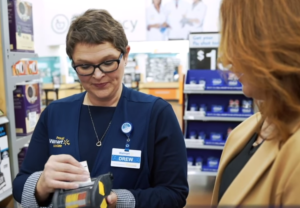
With the future of retail we have crossed over the demarcation line, says Walter Robb, the former co-CEO of Whole Foods. “We’re not going back to the old retail,” said Robb. “It’s just not going to happen. That’s the combination of digital and physical. We’re in what I would call new retail, which is the integration.”
Walter Robb, former co-CEO of Whole Foods, discusses the retail revolution currently underway in an interview on CNBC:
Traditional Retail Models Are Under Pressure
From where I sit the customer is doing pretty well. They’re spending. They’re pretty strong. There was a lot of pessimism at the back half of last year that was reflected in some of the stock prices, but I think that was overblown. We’re going to see a customer that’s doing pretty well this year in 2019 and might surprise a little bit to the upside. That being said, traditional retail models are under pressure. The customer is spending their dollars in so many different ways and places than they could before. You used to just open up four walls and open a store and now the customer has so many more options.
We do know that in the United States we’re about 24 square feet of retail space per capita and that’s two and a half times more than any other industrialized country. We have too much space so there’s going to be a winnowing out that’s going to happen here. There’s going to be winners and losers and we’re already seeing that. In 2019, I think that continues, but I do think that we’re in the second half of that. What we’re actually seeing that the mall is beginning to switch over and putting in exciting new uses and we’re seeing retail stores start to open again.
We Are Not Going Back to Old Retail
With the future of retail, we have crossed over the demarcation line. We’re not going back to the old retail. It’s just not going to happen. That’s the combination of digital and physical. You’re seeing the digital retailers, the Allbirds, the Warby Parker’s, come out and say, alright we’re going to open physical stores because we realize our customers want to experience our brand and be with us in that way. They’re bringing new ideas to that presentation of retail, which is pretty exciting.
At the same time, you’re seeing physical retailers adapt to digital ways. Take a look at Target and how they’ve employed all the new tools that they have for the customers, in-store apps and those sorts of things. You’re seeing a combination of these two. In some cases it’s adolescent and in some case it’s more mature, but we are not going back to just the simple form retailer. We’re in what I would call new retail, which is the integration.
The edge of which is actually in China with a supermarket called Hema from Alibaba, which is which is simply fantastic. It’s integrated on the back end and on the front end. I think you’re seeing retailers say, we’ve adapted to the age of Amazon and we understand this is how customers want to shop. We’re seeing a whole new generation of businesses and entrepreneurs say, I’m going to bring the customer this fusion of digital and physical in a way that’s really exciting and really compelling. We’re not going back. I opened my first store in 1978 but that’s just not as easy to do anymore because you have to have that the tools to really understand your customer personally. I think it’s pretty exciting to see what’s happening.
Physical and Digital Retailers Need Each Other
The business model on the last mile is very challenging unless you’re connected into a physical store. If you just out there floating without a connection to physical retail those have not proven to be sustainable. I think it’s clear to me that the customer wants that choice. I think the data is very clear that they want both. They’re not going to give up physical stores and that’s why you’re seeing these digital and physical retailers. They need each other and they need both parts of that to make the thing actually compelling for the customer.
I think there’ll be a shakeout. You seem some consolidation already, but the most interesting combinations are where the physical retailer buys the digital, where Target buys Shipt and where Walmart buys Flipkart or whatever you see around the world, realizing the combination is the most powerful. That will be the most sustainable from a business model perspective.

